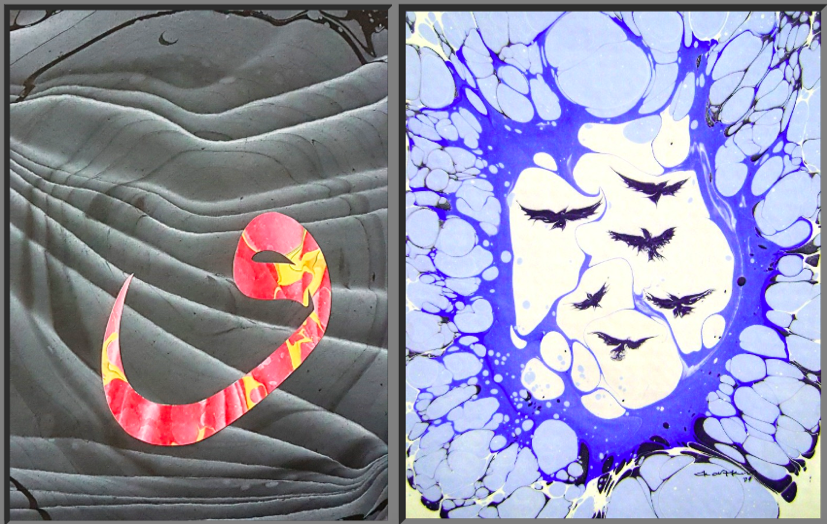
ART. Three letters, one word, and no universal meaning. This seemingly simply word can itself already cause you to either get really excited or roll your eyes. But ‘art’ is so much more than just paintings or drawings, it can take a lot more forms than sculptures or canvases. Whether you are an art enthusiast or consider yourself unaffected by it, art is an important medium for communicating emotions, sharing personal stories, or expressing a political opinion (see Kester, 2004). Taken together with the fact that art is the glue that keeps society together and fosters economic growth (Craske, 1997; Duelund, 2010), it is not really surprising that European institutions themselves emphasize the importance of art (Europa.eu).
There is, however a caveat in the European art landscape. As is the case in many sectors, the art world in Europe is not spared from a lack of diversity in their midst. Historically, works like the Mona Lisa by Da Vinci or van Gogh’s Self-portrait are the kinds of masterpieces that are seen as European art. If you think about it, virtually all ‘classics’ of European art are dominated by works of a white, Western, male elite (see Baragli, 2008; Giorgi, 2008; Zuffi, 2006). But what about the contributions of women? Where do the Europeans with a different religious, ethnic, or geographical background fit in? Well, traditionally these and other groupings are either not recognized at all or categorized as group-specific rather than European or universal – but we want to change that. With our newly-founded working group ‘EUrArt’, we dedicate ourselves to challenging this paradigm of universal European art as being confined to a small elite while diverging artists and artforms do not fit into this rigid box. Instead, EUrArt strives to transcend national boundaries with art in an inclusive way so that also ‘non-traditional’ artforms such as the Ebru art depicted in the two paintings by Okan Akin above are not automatically seen as part of an ‘exotic’, ‘other’ category but are part of the discussion.
Our talented young researchers cover topics from power structures in art institutions to historical developments to non-traditional artforms. From Friday onwards, every Tuesday and Friday one researcher is going to publish an article that introduces the specific niche between Europe and its art world they focus on with their research. While this will be our main focus for the upcoming weeks, it is important to mention that EUrArt is also a practical project that organizes an art competition and an exhibition amongst other things. What is more important, your voice counts and is in fact crucial for us. Only if you and other European citizens around you get involved can this project truly be successful. So, get crazy in the comment sections, share our posts, send us your art works, or reach out to us in any other form with your input. Only with your help can EUrArt become what it strives to be: Your art.
Next up: Our first researcher Isabella is going to explain how her research affects each and every one of us, so keep in touch!
By Cindy Langer, Editor in Chief of the European Student Think Tank – EST Board of 2017-18 and co-founder of the EUrArt Working Group.
Bibliography
- Baragli, S. (2007). European Art of the Fourteenth Century. Getty Publications.
- Craske, M. (1997). Art in Europe, 1700-1830: A history of the visual arts in an era of unprecedented urban economic growth. Oxford: Oxford University Press.
- Duelund, P. (2010). Jürgen Habermas, The structural transformation of the public sphere: an inquiry into a category of bourgeois society. International Journal of Cultural Policy, 16(1), 26-28.
- Europa.eu (2018). Culture in the European Union. Retrieved 2018, May 13th, from https://europa.eu/european-union/topics/culture_en.
- Giorgi, R. (2008). European Art of the Seventeenth Century. Getty Publications.
- Kester, G. H. (2004). Conversation pieces: Community and communication in modern art. University of California Press.
- Zuffi, S. (2006). European Art of the Seventeenth Century. Getty Publications.

 The geopolitical role of the Sahel: the influence of the EU and other Great Powers in the Malian crisis
The geopolitical role of the Sahel: the influence of the EU and other Great Powers in the Malian crisis  Is Nuclear Disarmament Still a Dream? The Third Meeting of State Parties in Perspective
Is Nuclear Disarmament Still a Dream? The Third Meeting of State Parties in Perspective  Strategic Saboteur: Hungary’s Entrenched Illiberalism and the Fracturing of EU Cohesion
Strategic Saboteur: Hungary’s Entrenched Illiberalism and the Fracturing of EU Cohesion  The invention of development: power, narrative, and the afterlife of Truman’s speech
The invention of development: power, narrative, and the afterlife of Truman’s speech 


